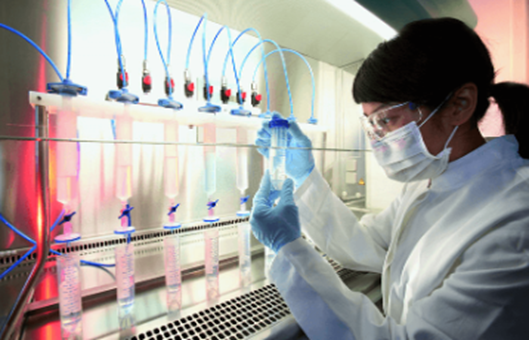GUIDELINE
- Mitochondria are prepared by tissue homogenization by differential centrifugation in a suspension medium. In a given centrifugal field, the settling velocity of a spherical pellet depends on the density, radius, and viscosity of the suspension medium. After centrifugation in a homogeneous suspension medium for a certain period, the various organelles and other inclusions in the tissues and plasma rest in different positions due to the different settling velocities. Sequentially increase the centrifugal force and centrifugation time, you can make these particles according to their size, and light and heavy batch settlement at the bottom, to collect in batches. Organelles settle in the order of nucleus, mitochondria, lysosomes and microsomes, and macromolecules.
- Suspension medium is usually used buffered sucrose solution, which belongs to the isotonic solution. More proximity to the cluster phase, to a certain extent, can maintain the structure of the organelles and enzyme activity and is conducive to separation. In addition, the calcium chloride adopted in the approach has the effect of stabilizing the nuclear membrane. The identification of mitochondria is done by Janus green B activity staining.
METHODS
Extraction of the cell nucleus
- Before the test, rats are fasted for 12 h, and the liver is quickly dissected after death by the method of deflagration, cut into small pieces (connective tissue is removed), and placed in a beaker containing 0.9% NaCI as soon as possible to wash and wash out the blood and water, and then suck dry with filter paper.
- Liver tissue with a wet weight of about 1 g is placed in a small flat. Using a measuring tape, measure 8 mL of preformed 0.25 mol/L sugar - 0.003 mol/L CaCl2 solution, add a small amount of this solution to the dish first, and try to shear the liver tissue as much as possible before adding all of it to shorten the homogenization time.
- Sheared liver tissue is poured into the tube with pulp, so that the lower end of the pulp with pulp immersed in a vessel containing ice, held in the left hand, the right hand will be homogenization pounding rod vertically inserted into the tube, up and down the rotation of the grinding for 3 to 5 times with 3 layers of gauze filter with pulp in the centrifuge tube. Figure respectively, the process should not be too long to maintain the physiological activity of the components.
- The centrifuge tube containing the filtrate is flattened into a centrifuge 2500 r/min centrifugation for 15 min. The supernatant is transferred to a high-speed centrifuge tube and kept in a beaker with ice. The remaining precipitate is held in the next step.
- Suspend the precipitate with 6 mL of 0.25 mol/L sugar - 0.003 mol/L CaCl2 solution, centrifuge at 2500 r/min for 15 min and discard the supernatant, then blow the residual liquid with a pipette to form a suspension, put a drop of it on a neat slide, smear and dry naturally.
- The smear is stained with 1% toluidine blue and then covered to view, dark blue nuclei are visible.
High-speed centrifugation for mitochondrial extraction
- Remove the high-speed centrifuge tube with supernatant from the beaker with ice, level, and centrifuge at 17000 rpm for 20 minutes, discard the supernatant, and retain the precipitate.
- Add 1 mL of 0.25 mol/L sugar - 0.003 mol/L CaCl2 solution, blow with a pipette to form a suspension, centrifuge at 17000 rpm for 20 minutes. Then the supernatant will be drawn into another test tube, leaving the precipitate. Add 0.1 mL of 0.25 mol/L sugar - 0.003 mol/L CaCl2 solution and mix to form a suspension (use a toothpick).
- Take the supernatant and precipitate suspension and place one drop each on a clean slide. Cover the slide with a drop of 0.02% Jenner Green B dye for 20 minutes.
NOTES
- Animal material is fasted overnight before testing to reduce the fat content of the tissue and to facilitate test manipulation.
- It is necessary to focus on maintaining the integrity of the organelles in the test, avoiding overly intense manipulation. In particular, mitochondria can only be detected by the active staining method when the respiratory oxidizing function is maintained.
- Because the mitochondria hold the detection of active staining method, the sample should be stained as soon as possible after the preparation, do not leave it too long.
- The whole process of the experiment should be held at 0-4°C, and the samples should be kept frozen. Rupture the tissue as fully as possible, shorten the homogenization time, and maintain its physiological activity.
RELATED PRODUCTS & SERVICES
